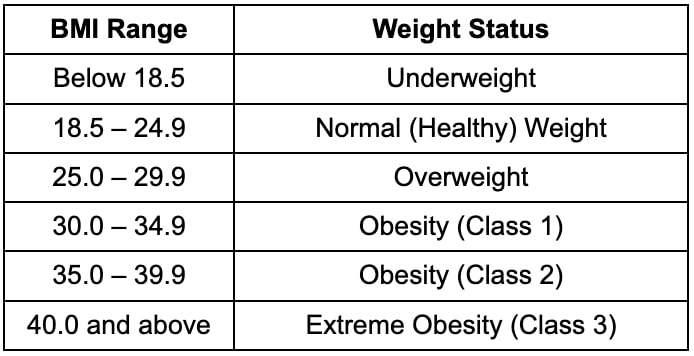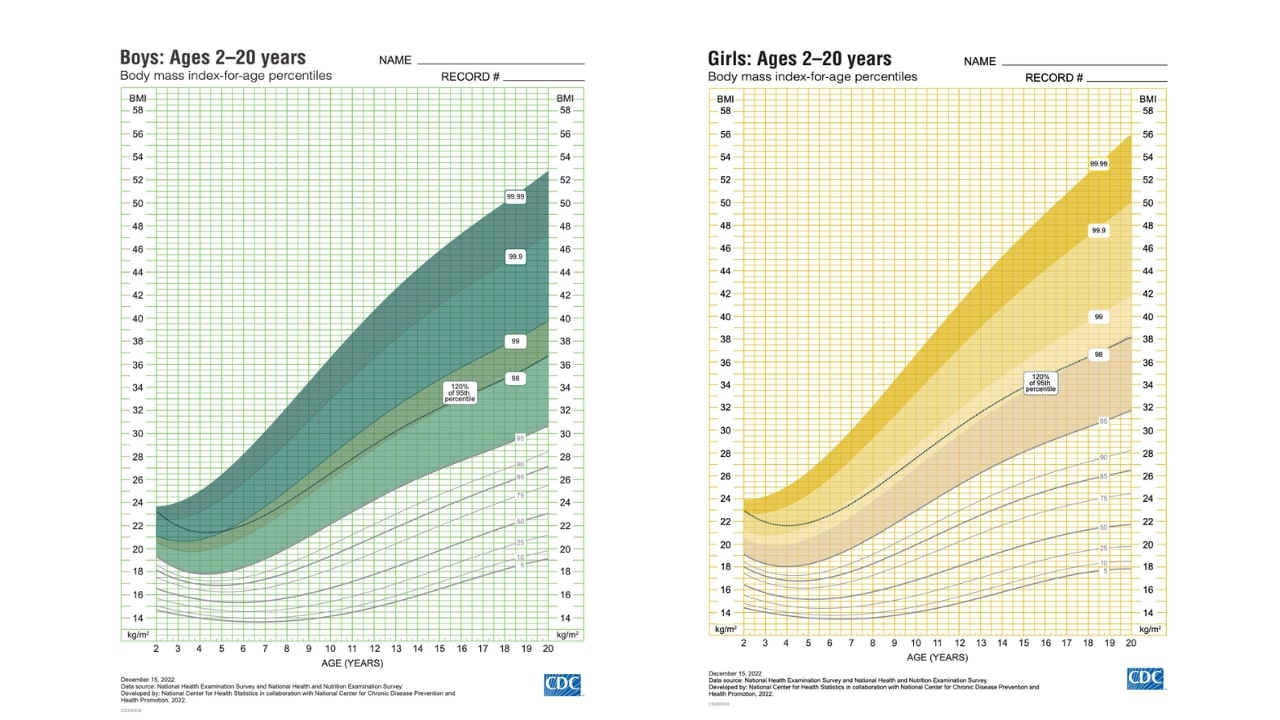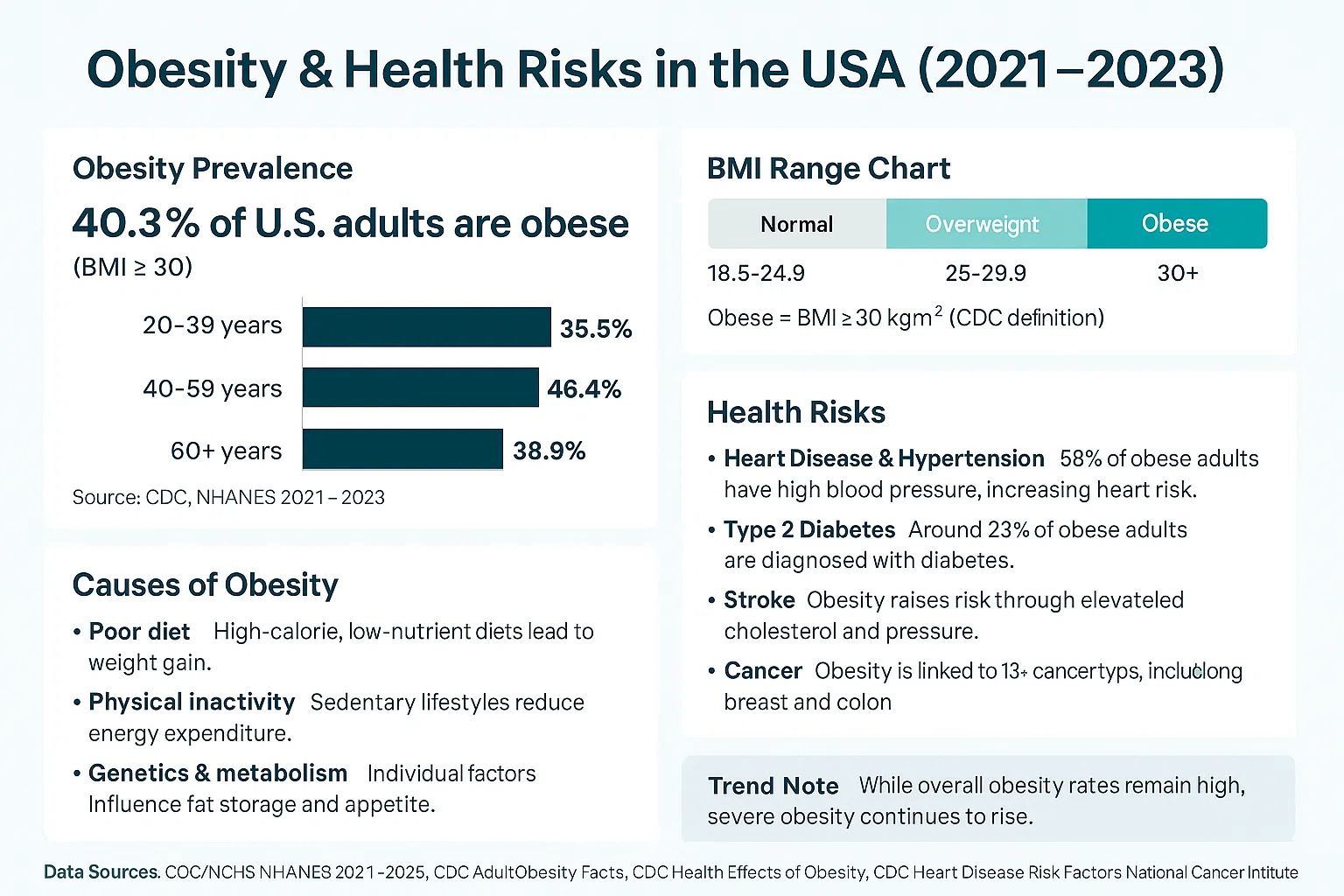You’ve likely come across the term BMI before. Maybe you’ve even tried out a BMI calculator — entered your height and weight, clicked “calculate,” and ended up with a number that’s supposed to reflect something about your body. But have you ever paused to wonder: What does that number really tell you?
BMI, short for Body Mass Index, shows up everywhere — from fitness evaluations and medical checkups to health apps and just about every online BMI calculator out there. It’s quick and easy to use. But underneath that convenience lies a much bigger discussion about health, body weight, and what society labels as “normal.”
What is BMI, really?
BMI, or Body Mass Index, is a number that compares your weight to your height. It’s figured out by taking your weight in kilograms and dividing it by your height in meters squared (kg/m²). If you’re using pounds and inches, the formula changes slightly:
BMI = (weight in pounds / height in inches²) × 703.
The result places you in a specific range — like underweight, normal, overweight, or obese — each linked to a general weight category.
💁♀️ Not sure how to convert between pounds and kilograms? Our Weight Converter can help you plug the right numbers into your BMI formula.
But have you ever wondered why we use BMI at all?
The idea dates all the way back to the 1830s, when a Belgian mathematician named Adolphe Quetelet created something he called the “Quetelet Index.” His intention wasn’t to evaluate individual health, but to explore average body proportions across populations. It wasn’t until the 1970s that American physiologist Ancel Keys brought it back into focus, rebranding it as Body Mass Index and recommending it as a simple, non-invasive tool for tracking body fat in large-scale research studies⁽¹⁾
.jpg)
These days, organizations like the World Health Organization (WHO) and Centers for Disease Control and Prevention (CDC) still use BMI — but mainly as a screening tool, not a medical diagnosis. The CDC defines BMI as “an inexpensive and easy screening method for weight category — underweight, healthy weight, overweight, and obesity.”⁽²⁾
What makes BMI so widely used is its speed and simplicity. No special equipment. No blood tests. Just your height, weight, and a fast calculation — the kind any BMI calculator or app can do in moments.
BMI Categories and What They Mean
After calculating your BMI, you’re left with a number — but what exactly does that number say about your health?
That’s where the BMI classification system comes in. Leading health authorities like the World Health Organization (WHO) and the Centers for Disease Control and Prevention (CDC) use established BMI ranges to sort individuals into categories based on their weight. These classifications offer a broad understanding of potential health risks linked to being underweight, overweight, or obese.
🙋♂️ For a more complete look at how your body burns energy at rest, try using our BMR Calculator alongside your BMI. If you're aiming to lose, gain, or maintain weight, check out the Calorie Calculator to get a personalized daily target.
Below is the general BMI category breakdown for adults aged 20 and older, based on WHO standards⁽³⁾:

These BMI categories are commonly used across the globe to spot early indicators of weight-related health concerns. According to the CDC, people who fall into the overweight or obese ranges may be at a higher risk for chronic illnesses like type 2 diabetes, high blood pressure, heart disease, sleep apnea, and even some forms of cancer.
For children and adolescents under the age of 20, BMI is evaluated using percentiles that take age and gender into account, since these factors significantly influence growth and development. Applying adult BMI categories to younger individuals wouldn't offer a reliable picture of their health status.
BMI Classification Chart for Children and Teens:

But having a low BMI doesn’t automatically mean you’re in good health either. People in the underweight range may be at risk for issues like malnutrition, a weakened immune system, low bone density, fertility problems, and for older adults, a greater chance of frailty or injury⁽⁵⁾.
It’s not about calling someone “too big” or “too small.” It’s about creating a starting point for a more meaningful health discussion.
⚠️ Important Notes:
- These ranges work for most adults, but not everyone. They don’t factor in age, sex, ethnicity, or muscle mass, all of which can change how BMI should be understood.
- When it comes to children and teens, BMI is evaluated differently — using age- and gender-based percentile charts, which we’ll explore later in the article.
Obesity and Health Risks
When your BMI moves into the obese range (30.0 or higher), it’s more than just a statistic — it’s a health warning. Obesity is associated with numerous long-term health conditions that can shorten lifespan, lower quality of life, and raise medical costs both individually and across the healthcare system.

According to the Centers for Disease Control and Prevention (CDC), obesity raises your risk of developing the following⁽⁷⁾:
-
Type 2 Diabetes: The leading risk factor is obesity. Carrying excess fat, especially around the abdomen, can lead to insulin resistance, a key driver of type 2 diabetes.
-
High Blood Pressure (Hypertension): Extra body fat can interfere with hormonal regulation, causing increased blood volume and pressure on artery walls.
-
Heart Disease and Stroke: Obesity is closely linked with cardiovascular problems, including heart attacks, stroke, and high cholesterol. Fat cells produce inflammatory agents that can harm blood vessels and increase LDL ("bad") cholesterol.
-
Certain Cancers: Research shows a higher risk of cancers like breast, colon, kidney, and liver in individuals with obesity⁽⁸⁾.
-
Sleep Apnea: Extra fat around the neck and airways can obstruct breathing during sleep, causing fatigue, heart strain, and low oxygen levels.
-
Joint Pain and Osteoarthritis: Carrying extra weight puts stress on joints like the knees and hips, speeding up joint deterioration.
The risks grow as BMI increases. Someone with a BMI of 35 generally faces more severe health concerns than someone at BMI 30, especially if the excess fat is concentrated around the midsection. To plan your meals or fitness routine, it helps to know your total daily burn — and that’s where the TDEE Calculator comes in.
💡 Did you know?
According to the latest CDC data, over 42% of U.S. adults⁽⁹⁾ are classified as obese — nearly 1 in 2 people. It’s a striking number that highlights not just personal lifestyle habits, but also larger systemic and environmental health challenges.
Limitations of BMI
Despite its widespread use, BMI is a fairly crude measurement tool. While it’s useful for identifying possible weight-related health risks across large populations, it falls short when it comes to capturing the nuanced, personal differences in body composition, age, ethnicity, and fitness levels.
1. It Doesn’t Separate Muscle from Fat
A major flaw in the BMI system is its inability to tell the difference between body fat and muscle mass. This can lead to misleading classifications — especially for athletes or those with more muscle. For example, a bodybuilder in peak physical condition might be labeled “obese” under BMI standards, even if their body fat is low and heart health is excellent.
The opposite can also occur: a person with a “normal” BMI might still carry too much visceral fat — the harmful fat stored around internal organs — which is linked to serious health risks⁽¹⁰⁾. In such cases, the BMI number can offer a false sense of security.
2. It’s Not Universally Accurate Across All Groups
BMI is most effective as a general screening tool for non-pregnant adults between 20 and 65. Beyond this age range or outside this group, its reliability tends to decrease.
-
Children and Teens: Since growth patterns differ widely by age and sex, BMI for younger individuals needs to be interpreted using percentile charts. That’s why specialized tools — like a BMI calculator by age and gender — are more accurate when assessing children's health⁽¹¹⁾.
-
Older Adults: As people age, it’s common to lose muscle mass and gain body fat, even if their weight remains stable. A senior with a so-called “normal” BMI might still face serious health risks due to sarcopenia, or age-related muscle loss.
-
Ethnic Variation: Some populations may develop chronic diseases at lower BMI levels. For example, individuals of Asian descent can be at risk for diabetes or heart conditions with a BMI under 25. Because of this, certain countries have introduced ethnicity-specific BMI thresholds⁽¹²⁾.
3. It Can Oversimplify Health in Clinical Practice
In a medical setting, context is key. Using BMI alone without considering other factors can result in missed diagnoses or unnecessary concern. For example, someone with a “normal” BMI could still suffer from metabolic syndrome, elevated cholesterol, or poor cardiovascular fitness.
On the flip side, an individual labeled “overweight” by BMI standards might be metabolically healthy, physically active, and getting proper nutrition. That’s why many healthcare professionals now treat BMI as just a starting point — not a final answer. That’s why many people turn to more direct tools like our Body Fat Calculator, which gives a clearer picture of fat percentage regardless of BMI.
BMI by Age and Gender
While BMI is calculated with the same formula for everyone, it doesn’t impact all bodies in the same way. Factors like age and gender play a major role in how we store fat, our natural body composition, and how health risks appear at different BMI values. That’s why looking at BMI without context can sometimes give a misleading picture.
So, does BMI take into account the differences between male and female bodies?
On average, females tend to have a higher body fat percentage than males — even when their BMIs are the same. This isn’t just normal; it’s biologically necessary for things like hormone balance and reproductive health. A BMI of 23, for example, might show up very differently in a woman versus a man, especially when it comes to fat distribution and metabolic health. That’s why many tools now include options like BMI calculator female or women’s BMI calculator, which offer more tailored feedback by factoring in gender-specific patterns.
On the other hand, men generally have more lean muscle mass and tend to carry fat around the abdomen. This can allow them to have higher BMI values before showing signs of risk, all while remaining metabolically healthy. As a result, versions like the BMI index male calculator or BMI calculator male are becoming more common in both medical and fitness environments — helping to connect the numeric result with the real-world picture.
🔎 BMI doesn’t show where fat is stored — but our Waist-to-Hip Ratio Calculator can give you insights into fat distribution.
.jpg)
And how does age affect the BMI story?
As we get older, our body composition naturally changes — even if our weight stays the same. Muscle mass declines, and fat mass increases, a process known as sarcopenia. This matters especially for older adults, who may have a “normal” BMI but still face health risks due to low muscle reserves — raising their chances of frailty, insulin resistance, or fall-related injuries.
For younger individuals, particularly children and teens, interpreting BMI becomes even trickier. Since their bodies are still growing, healthcare providers rely on age- and sex-specific growth charts rather than standard adult ranges. That’s why a BMI calculator by age and gender is essential for accurately tracking healthy development⁽¹³⁾.
.jpg)
Consider this example: a 21-year-old male athlete with a BMI of 28 might technically be labeled “overweight.” But if that number reflects muscle mass rather than fat, he’s probably in far better shape than someone with the same BMI who leads a sedentary lifestyle.\
On the other hand, a 45-year-old woman with a BMI of 22 could still face health concerns if most of her body fat is visceral — the deeper fat stored around vital organs, which carries more risk than fat just beneath the skin. If you’re curious about how much of your weight is lean muscle — especially as you age — try our Lean Body Mass Calculator for a more detailed view.
All of this leads to one clear takeaway: BMI isn’t one-size-fits-all. Both age and gender play a significant role in how BMI should be interpreted. While standard BMI calculators are helpful starting tools, more personalized options — like gender-specific or age-adjusted calculators — give a clearer picture of someone’s true health status.
BMI is just one part of the bigger health picture. If you're curious about how it connects with other aspects of wellness, check out our full health calculator for tools that go beyond the scale.
⁽¹⁾ Keys A, et al. "Indices of relative weight and obesity." Journal of Chronic Diseases, 1972.
⁽²⁾ Centers for Disease Control and Prevention (CDC). “About Adult BMI.”
⁽³⁾ World Health Organization (WHO). “Body mass index - BMI.”
⁽⁴⁾ Centers for Disease Control and Prevention (CDC). “The Health Effects of Overweight and Obesity.”
⁽⁵⁾ National Institutes of Health (NIH). “Underweight: Health Risks and Tips.”
⁽⁶⁾ CDC. “About Child and Teen BMI.”
⁽⁷⁾ CDC. “Adult Obesity Causes & Consequences.”
⁽⁸⁾ National Cancer Institute. “Obesity and Cancer Fact Sheet.”
⁽⁹⁾ CDC. “Prevalence of Obesity and Severe Obesity Among Adults: United States, 2017–2020.”
⁽¹⁰⁾ Harvard School of Public Health. “Limitations of BMI.”
⁽¹¹⁾ CDC. “BMI for Children and Teens.”
⁽¹²⁾ WHO Expert Consultation. “Appropriate BMI for Asian populations.” Lancet, 2004.
⁽¹³⁾ NIH. “Assessing Your Weight and Health Risk.”


.jpg)



.jpg)
.jpg)